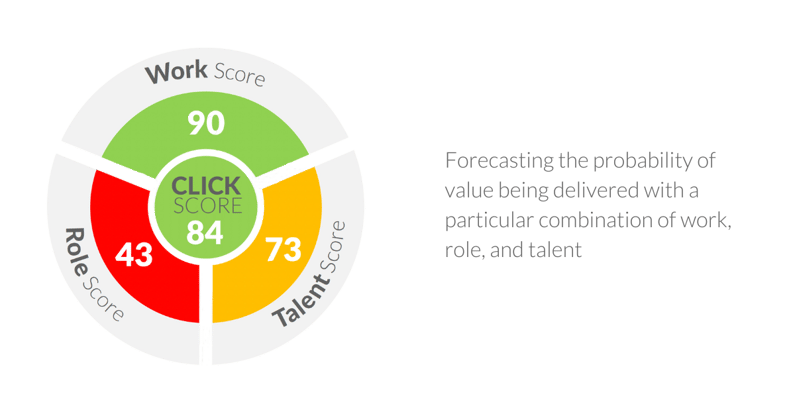Don’t Assess Talent – Forecast Value
Why do we look in the rear-view mirror rather than the front windshield to determine if we have the right individuals in the critical roles to create value for our organization?
Evaluating what a person did in the past is not the best way to predict what they will do in the future. Things change – most importantly, context, which is rarely captured in a traditional talent assessment that, truth be told, is more a backward-looking post-mortem of a snapshot from the past rather than a forward-looking value forecast of the future.
A talent assessment looks at an individual’s capabilities, experiences, and potential to determine how well they are performing in their job and what they can do to improve. By contrast, a value forecast is a forward-looking prediction of the likelihood that an individual in a role can execute the jobs to be done and deliver the value expected on time.
So, without a crystal ball, how is a CEO or business leader supposed to accomplish such a feat? By knowing with certainty that their organization has enough talent to drive value creation from its financial, strategic, and operational improvements to win in the marketplace. This value forecast approach analyzes both the demand for talent (roles) and the supply of talent (individuals) in an organization at critical points of value creation to predict the probability such a match will succeed. We call this prediction a click score.
Click Score to the Rescue
A click score is a forecasting tool derived from a detailed analysis of a critical role, its work, and its incumbent talent to predict the probability of on-time value delivery.
Each click score represents a composite assessment of three factors: the work challenge, the role design, and the talent match. As such, a click score consists of a work score, a role score, and a talent score that, when combined, predict not only potential outcomes but also execution risks to the value creation.

Forecasting value is similar to forecasting other important business results. The process is the same, namely, to gather data from relevant sources and, using analytical tools, assess the probabilities of certain outcomes occurring in the future. The purpose of such a forecast is to connect talent demand with talent supply dynamically to make value delivery possible. And with time, practice, and the right tools, these forecasts improve and so does the company’s value creation.
New PE Playbook for Value Creation
The overarching goal for every company is to create value in the form of positive returns for shareholders or investors. In today’s fast-paced PE environment, CEOs must take the lead in optimizing their organization’s value creation. To do so requires a precise assignment of the work required to the critical roles and talent responsible for the defined outcomes in the time allotted. The CEO needs a different mindset and a more quantitative approach to talent evaluation and deployment.
The tools for this job include a system of transparent, evidence-based metrics like the click score in order to bring inherent bias to the surface and achieve improved objectivity. Also, this system considers both the specific context of the challenge at hand and identifies the underlying risks to value creation in the particular situation. This unique forecast provides evidence of the readiness, willingness, and ability of different individuals to overcome those challenges and successfully deliver the value needed to win.
Armed with a set of click scores, CEOs and business leaders can see in real-time which components of the role-work-talent combinations are most vulnerable across the pivotal places in the organization and intervene to improve the chances of expected value delivery.
Rather than rely on instinct, we can utilize these simple, empirical scores as a framework to guide our judgments, reduce subjectivity and improve the quality of our talent decision-making. No crystal ball required.


